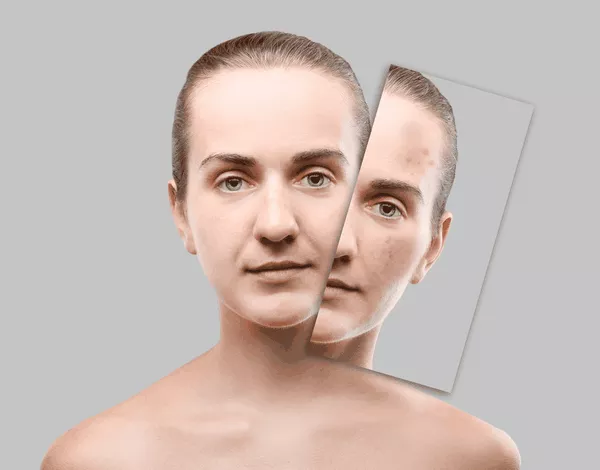Plastic surgery has long been a solution for individuals seeking to enhance their appearance or restore lost confidence. While the primary goal of plastic surgery is to achieve aesthetic improvements, one common concern among prospective patients is the potential for scarring. In this comprehensive article, we will delve into the world of plastic surgery and explore whether or not these procedures typically leave scars, as well as the factors that influence scarring and strategies for minimizing their appearance.
The Nature of Plastic Surgery:
Plastic surgery encompasses a wide range of procedures, from facelifts and breast augmentations to liposuction and rhinoplasty. These surgical interventions are designed to enhance physical features, correct deformities, or reverse the signs of aging. While the ultimate objective is to achieve natural and harmonious results, it’s essential to understand that surgery inherently involves incisions and the potential for scarring.
The Truth About Scarring:
Scarring is a natural part of the body’s healing process. When the skin is cut or injured, the body responds by forming collagen fibers at the site of the injury to repair the damaged tissue. This process is known as wound healing, and it leads to the formation of a scar. Scars are typically more noticeable in the initial months following surgery and may gradually fade over time.
Factors Influencing Scarring:
Several factors can influence the extent and appearance of scars resulting from plastic surgery. Understanding these factors can help individuals make informed decisions about their procedures and post-operative care:
Surgical Technique: The skill and precision of the surgeon play a crucial role in minimizing scarring. Experienced plastic surgeons use techniques that are designed to create discreet incisions and optimize wound closure.
Incision Placement: The location of incisions is carefully planned to ensure that scars are well-hidden or inconspicuous. Surgeons often place incisions in natural skin creases or areas that can be easily concealed by clothing.
Individual Healing: Each person’s body responds differently to surgery and the healing process. Factors such as genetics, age, and overall health can influence how a scar develops.
Post-Operative Care: Proper wound care and adherence to post-operative instructions are essential for scar management. Patients must keep incisions clean, avoid excessive sun exposure, and use recommended scar creams or dressings as advised by their surgeon.
Complications: In some cases, complications like infection or poor wound healing can lead to more prominent scars. It’s crucial for patients to follow all post-operative care guidelines to reduce the risk of complications.
Types of Scars Resulting from Plastic Surgery:
Scars can vary in appearance, texture, and visibility, depending on the individual and the surgical procedure. Common types of scars associated with plastic surgery include:
Fine-Line Scars: These scars are often thin, flat, and closely resemble the surrounding skin. Fine-line scars are generally the desired outcome of plastic surgery procedures, as they are less conspicuous.
Hypertrophic Scars: Hypertrophic scars are raised, red, and may appear thicker than the surrounding skin. They typically stay within the boundaries of the original incision but can be more noticeable.
Keloid Scars: Keloid scars are thick, raised, and extend beyond the boundaries of the original incision. They can be more prominent and may require additional treatments to manage their appearance.
Atrophic Scars: These scars appear depressed or sunken compared to the surrounding skin. Atrophic scars are less common in plastic surgery but can occur, especially in procedures involving tissue removal.
Pigmented Scars: Some scars may become darker or lighter in color than the surrounding skin. Pigmented scars can be managed with treatments like laser therapy.
Minimizing Scars After Plastic Surgery:
While it’s impossible to eliminate scarring entirely, there are several strategies and treatments available to minimize the appearance of scars resulting from plastic surgery:
Proper Wound Care: Follow your surgeon’s post-operative care instructions meticulously. Keep incisions clean, avoid excessive moisture, and change dressings as directed.
Scar Creams and Gels: Over-the-counter scar creams or gels containing ingredients like silicone can help soften and flatten scars. Prescription-strength options may be recommended for more noticeable scars.
Massage: Gentle massage of the scar tissue can improve blood flow and help scars become less visible. Use a non-irritating lotion or cream and perform the massage as advised by your surgeon.
Silicone Sheets or Gel Pads: These medical-grade products can be applied directly to scars to reduce their visibility. They are particularly effective for hypertrophic and keloid scars.
Laser Therapy: Laser treatments can target and break down scar tissue, encouraging the growth of new, less visible tissue.
Steroid Injections: In some cases, your surgeon may recommend steroid injections to reduce inflammation and flatten hypertrophic or keloid scars.
Surgical Scar Revision: For persistent or bothersome scars, surgical scar revision may be an option. This procedure involves removing the old scar tissue and creating a new, less conspicuous scar.
Patient Expectations and Communication:
Effective communication between the patient and the plastic surgeon is essential throughout the surgical process. It’s crucial for patients to have realistic expectations regarding scarring and to discuss their concerns and preferences with their surgeon. A skilled and experienced plastic surgeon will provide a clear understanding of the potential outcomes, including scarring, and work closely with the patient to achieve their aesthetic goals while minimizing the appearance of scars.
Conclusion:
Plastic surgery, while transformative, involves incisions and the potential for scarring. However, with careful planning, surgical expertise, proper post-operative care, and the use of scar management techniques, the appearance of scars can be minimized, allowing patients to enjoy the aesthetic enhancements they desire with confidence. Remember that individual healing and scarring patterns vary, so open communication with your plastic surgeon and adherence to their guidance are key factors in achieving the best possible outcome. Ultimately, the decision to undergo plastic surgery should be made with a clear understanding of the potential for scarring and a commitment to follow post-operative care instructions for optimal results.


